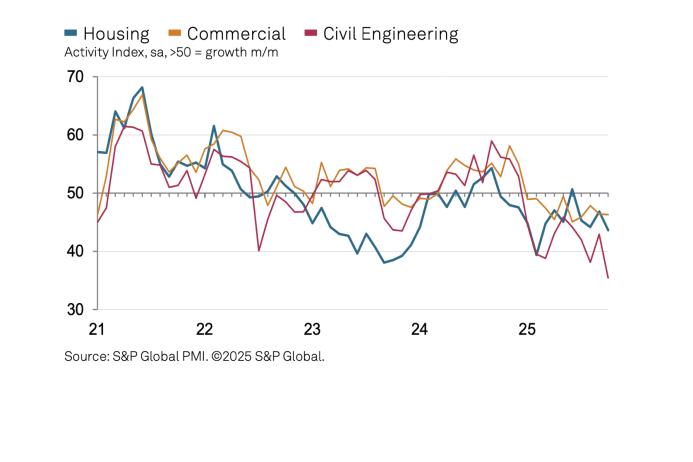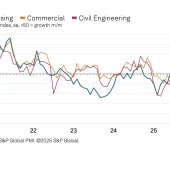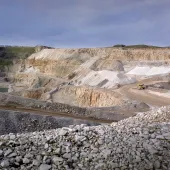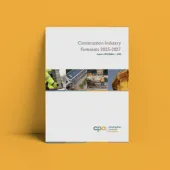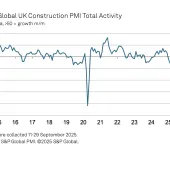UK construction activity declines at fastest pace for over five years
Steep reductions in housing and civil engineering activity, while commercial building activity shows some resilience
UK construction companies indicated that output levels remained on a downward trajectory in October. Moreover, the rate of decline in total industry activity was the steepest recorded since May 2020.
The headline S&P Global UK Construction Purchasing Managers’ Index (PMI) – a seasonally adjusted index tracking changes in total industry activity – registered 44.1 in October, down from 46.2 in September and below the 50.0 no-change mark for the tenth consecutive month. This marked the longest period of continuous decline since the global financial crisis more than 15 years ago.
Civil engineering remained the weakest-performing segment in October (index at 35.4), with business activity falling sharply and at the fastest pace since May 2020. Survey respondents widely cited a lack of new work to replace completed projects. Residential work (index at 43.6) also decreased markedly, and the latest decline was the greatest for eight months. Commercial building activity, meanwhile, showed some resilience as the latest index reading (46.3) was little-changed since September.
Lower levels of business activity reflected a sustained downturn in new work across the construction sector. The rate of decline accelerated since September, but remained slower than seen on average in the first half of 2025. Many construction companies noted sluggish market conditions, fewer tender opportunities, and delays with the release of new projects. There were also reports that elevated political and economic uncertainty had discouraged client spending.
Nevertheless, business activity expectations for the year ahead were positive overall in October. Around 34% of the survey panel predict a rise in output, while 20% forecast a reduction. Although still at a historically subdued level, the latest survey indicated that business optimism edged up to its highest since July. Lower borrowing costs, hopes of a turnaround in clients' risk appetite, and favourable demand projections in areas such as energy infrastructure spending were cited as helping to boost business expectations in October.
Tim Moore, economics director at S&P Global Market Intelligence, said: ‘UK construction companies reported another challenging month in October as the prolonged weakening of order books so far in 2025 resulted in the fastest decline in business activity for over five years. Civil engineering and residential activity saw the fastest rates of contraction, while commercial building showed some resilience.
‘Reduced workloads were again widely attributed to risk aversion and delayed decision-making among clients, which contributed to a slower-than-expected release of new projects. Subdued demand in the wake of heightened political and economic uncertainty also led to the steepest drop in input buying since May 2020.
‘Looking ahead, business activity expectations for the coming 12 months remained much weaker than the long-run survey average, largely due to worries about fragile investment sentiment and weak sales pipelines. However, overall optimism levels edged up to the highest since July as the prospect of lower borrowing costs reportedly helped to boost demand projections.’

